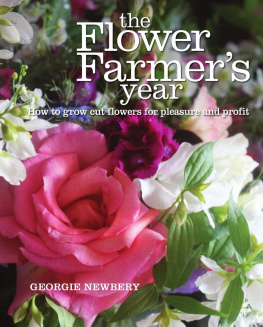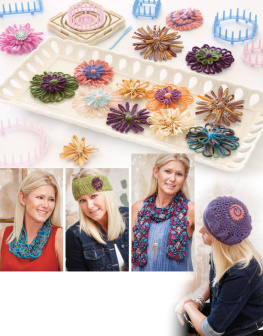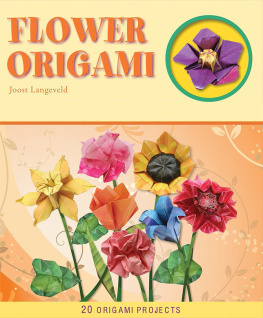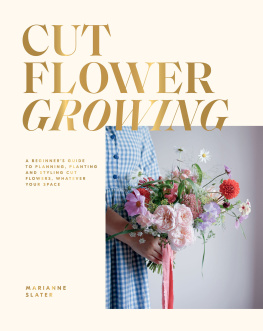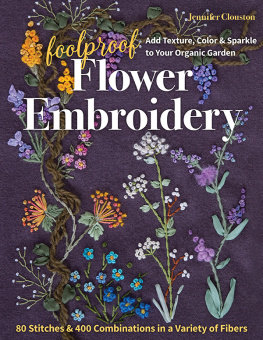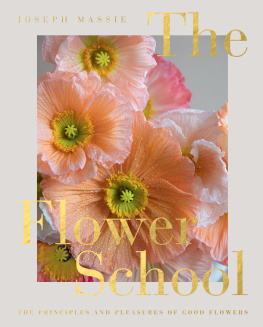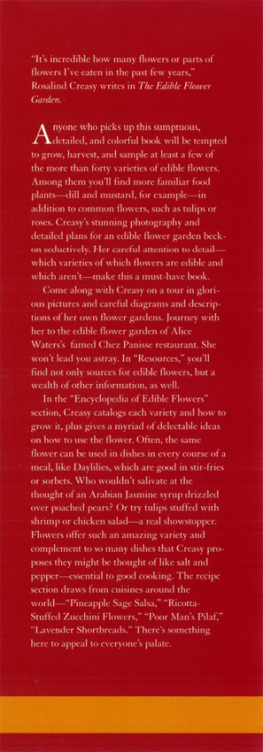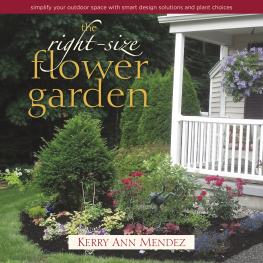Flowers are important very important in oh, so many ways.
Many, many years ago I gave flowers to the beautiful girl who is now my wife. Being a bit of a show-off, I felt a grand gesture was required, so delivered two hundred roses to her office in a battered Land Rover while wearing a kilt. She was extremely embarrassed, but (such is the power of young love and flowers) forgave me, and the rest is, as the clich goes, history.
I share this snippet with you to show the persuasiveness of flowers.
Georgie Newbery is, therefore, a cross between an enchantress and Wonderwoman, as her Somerset flower farm is the source of the power to change peoples lives. To make it even better, she does it with style, pizzazz and a social conscience.
Her flowers are grown with consideration for both the locality and the wider environment. Aphids are allowed (because they feed the ladybirds) and slugs are permitted (to keep the hedgehogs happy). There are hedges (for foliage and berries), trees (for catkins and bark) and a formidable miscellany of good, healthy British flowers. From sweet peas and sorrel to buttercups and bistorts: theres pretty much anything that can be moulded into a nosegay, wreath, sprig or garland.
So next time you need a bouquet (whether to get yourself into or out of trouble), eschew the garage-forecourt chrysanthemum and the scentless, pesticide-laden imported rose, and call Georgie: she can always be relied on to pack a powerful bunch.
Introduction:
Why grow cut flowers?
The international cut-flower industry is a monster, a behemoth, a vast bloom-producing machine, in which plants, water, chemicals and people are bent to the will of the worlds flower-greedy public. Year-round, hundreds of millions of flowers are produced by thousands of workers working flat-out to supply our desire for great big long-lasting bouquets to give our mothers, lovers, friends and neighbours.
We give flowers at the drop of a hat: for Christmas, Easter, Valentines Day, Mothers Day; for love, congratulations, anniversaries, commiserations But do we think about where these flowers come from? Do we care about the environmental impact they have had in their journey from far across the sea through fungicide bath to air-vacuumed cold storage and eventually, kept alive with frequent pulses of sugar and bleach, to our own kitchen tables? When a bride walks down the aisle, coyly dipping her nose to her tight-packed bunch of roses, do we think of the chemicals shes breathing in?
There is a small revolution happening worldwide. People are beginning to realize the environmental impact of their cut-flower habit. The same people who worry about where their meat comes from how it was raised, what it grazed on; the same people whod rather not buy out-of-season green beans or strawberries flown in from the other side of the world those people are looking at the bunches of flowers they have, until recently, added unthinkingly to their supermarket trolleys, and theyre leaving those bunches on the shelves. They are making a quiet protest at the environmental cost of the international cut-flower trade.
However, while people may no longer like to buy chemical-dunked flowers looking shocked after release from weeks of cold storage, they still like to buy flowers. And if theyre not going to buy them at the supermarket checkout, or theyre told at the high-street florist shop that all the flowers there are imported, then where are they going to get them?
Well, maybe youve picked up this book because you remember that your grandmothers gardens were full of flowers for cutting That there used to be a whole group of little flower farms in the next town or village That small-scale, domestic flower-growing used to be a good industry. And you are thinking of turning to your seed catalogues and beginning to grow cut flowers yourself.
Home-grown cut flowers sold to a relatively local market have virtually no carbon footprint and certainly no air miles! And however much you like to douse your garden in chemicals, believe me, you will be using an infinitesimal amount compared with the fungicide-dunking that some multinational companies impose on flowers flown in from South America and Kenya.

A mixed bouquet of flowers fresh from the garden: including roses, feverfew, ammi and scabious.
Flowers grown in a small-scale setting are fresher by days than flowers flown from big corporations air-conditioned polytunnels in South America to the auction in Holland, then flown on again to another countrys wholesale market, where they are bought by a florist who may then have them sitting around in the shop for days before selling them to you.
Grow your own and you can grow what you cannot buy: the lace-capped flowers, the wild flowers which wont travel out of water, the sweet peas which will fill your house with their sweet, peppery perfume because you dont treat them with silver nitrate to make them last longer. Your flowers will be scented, will feed the bees, will grow in the vase. Will you be able to sell your surplus? Well, once youve read this book, then I hope youll agree that you can.
My other half and business partner Fabrizio Boccha decided that we would be artisan florists and flower farmers, and I think the word artisan is so important as part of the description of what we do. Our work is carefully crafted, handmade, bespoke. Our crops are grown with an eye to feeding our environment as well as feeding our own need for beautiful cut flowers. We consider ourselves artists in that each bouquet is a piece of work as perfect and fleeting as the salt mandalas made by Buddhist monks in the mountains of Nepal, whose focus on their work is intense and perfectionist, in full knowledge that the day the mandala is finished is the day that the wind begins to blow it away.
Cut flowers should have that fleeting beauty too, their inevitable end giving their presentation a loveliness more cherished because it cannot last. Artisan growers work in the moment; plan for the minute; are attuned at all times to the gorgeous combinations that can be made on a certain day, in a certain month, at a certain season never the same twice, certainly not two years running. Let the international cut-flower trade specialize in gerberas that will last a month, in single-stem unscented roses which they dunk 50 at a time in fungicide to keep them lasting. Let them deal with the problem of extracting from the water they pour back into the system the silver nitrate in which their flowers are conditioned.

